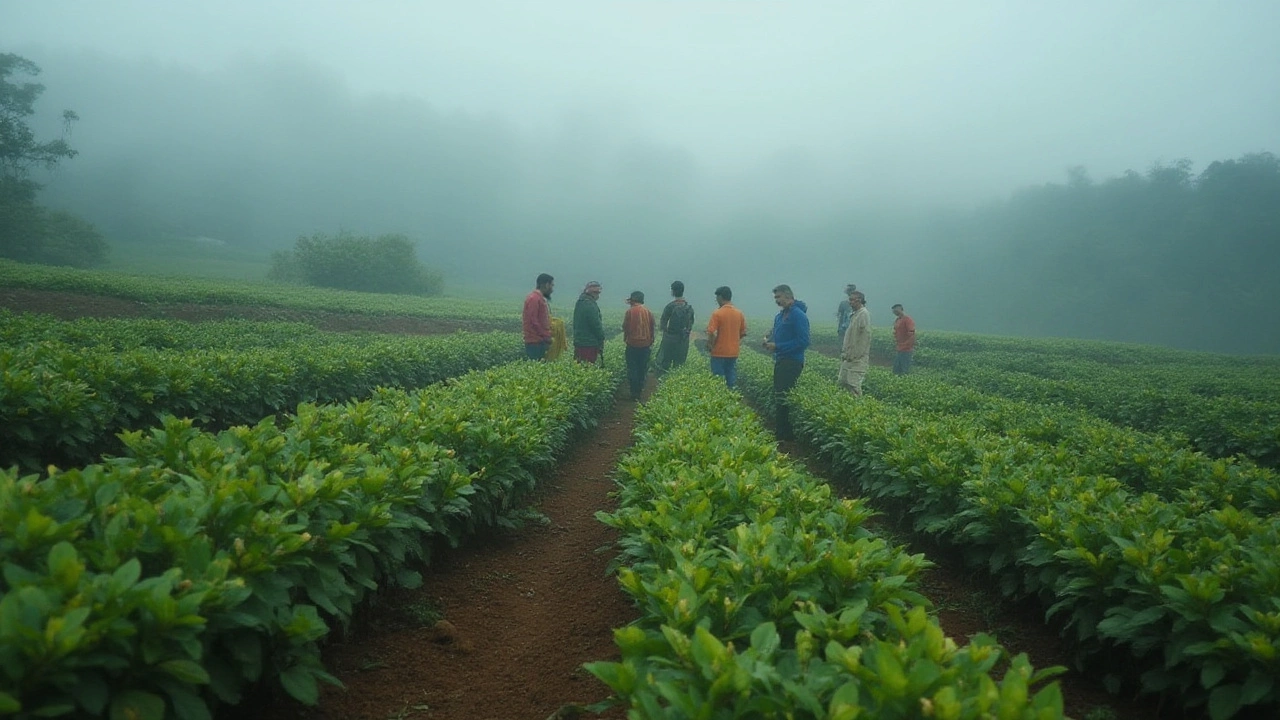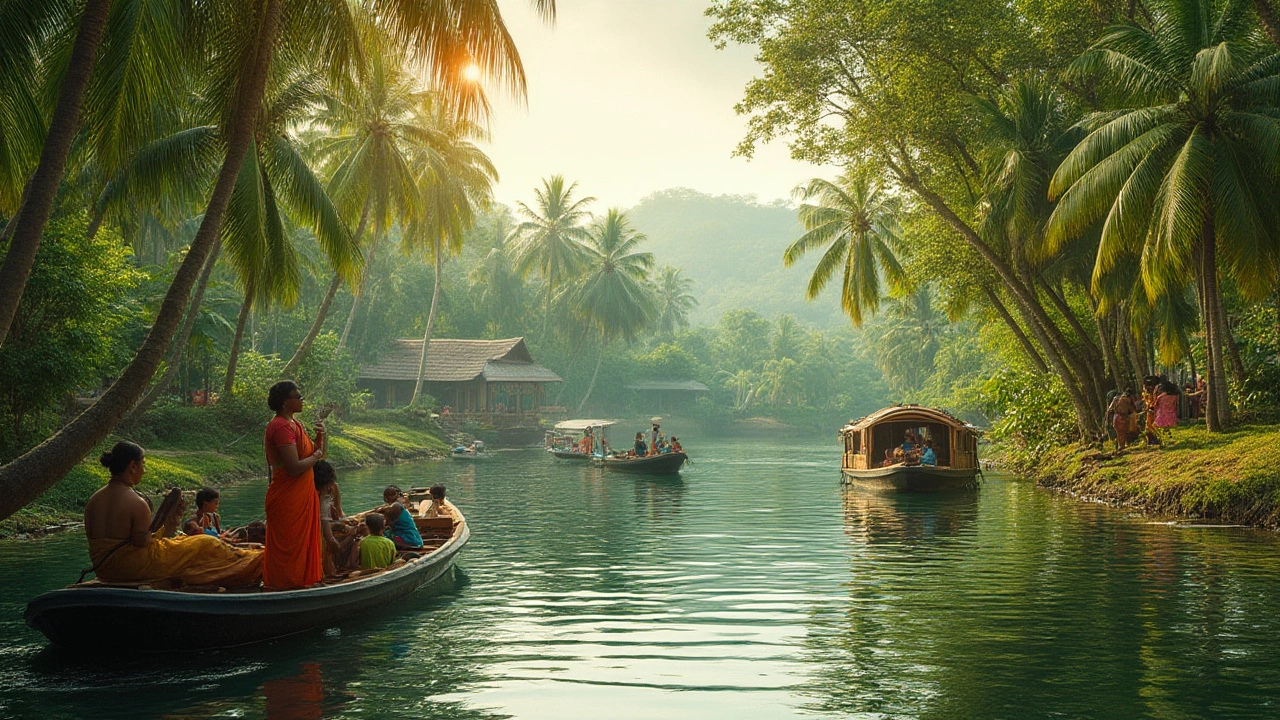Picture waking up to the sound of water gently lapping against a houseboat while palm trees sway outside your window. Think fresh coconut in your hand, emerald hills rolling off into the distance, and wild elephants roaming lush jungles. That’s not a travel fantasy. It’s daily reality in Kerala, the state nicknamed “God’s Own Country,” and not just by marketers either. When people dream about South India’s top tourist draw, Kerala always claims the spotlight. From international backpackers to families and honeymooners, everyone’s got Kerala on their bucket list. Most tourist arrivals in South India—Indian or foreign—have Kerala marked in red on the map. Want to know why? Let’s get into what keeps Kerala an unrivaled favorite and what you can discover when you finally get there.
The Enchantment of Kerala’s Backwaters
The Kerala backwaters aren’t just a collection of lakes and canals. They're an intricate network stretching over 900 kilometers, linking tiny hamlets, paddies, coconut groves, and fishing villages. Places like Alleppey and Kumarakom are magnets for travelers, mostly because gliding across these still waters in a houseboat offers a flavor you won’t get anywhere else. Picture yourself floating along in a converted rice barge, watching local life unfold at water level—kids rowing to school, villagers tending ducks, women washing clothes at the water’s edge. It’s a show that never gets old. Kerala’s houseboat industry isn’t just about luxury either. You can find everything from private romantic boats with Jacuzzis to simple, budget-friendly shikaras equipped for a day’s cruise.
Try planning your houseboat adventure to coincide with Onam, Kerala’s biggest festival, usually in August or September. If you time it right, you’ll witness the legendary Snake Boat races—seriously intense! Crews paddle these long, snake-like boats in a spectacle that draws thousands of fans. It’s one of those things that makes you pinch yourself—did I really just see that?
Booking tips? If you love peace and quiet, weekdays are less crowded, and smaller canals provide a more intimate experience. If you book directly with local operators in Alleppey or Kumarakom instead of online booking giants, you can sometimes haggle your way to discounts and enjoy a fresher, homier meal on board—think roasted pearl spot fish and coconut curry, plus unlimited chai!
Breathtaking Hill Stations and Tea Gardens
If cool mountain air and panoramic views are more your speed, Kerala’s hill stations have your name written all over them. Munnar, perched 1,600 meters above sea level, feels a world away from the tropical coast. The hills here are carpeted with glimmering tea plantations—seriously, these endless green waves are what phone wallpapers dream of being. Get up early, trek above the clouds, and watch the sunrise bathe the mountains in gold. If you’re a photography buff, Munnar and Wayanad have hidden valleys and mysterious mist-shrouded cliffs that look unreal, especially right after a monsoon rain.
Tea lovers, this is your playground. Attend a local tasting or tour a tea factory to understand how the leaf in your morning cuppa is plucked, dried, and rolled. Fun fact: Kerala’s tea estates produce more than 20 million kilograms of tea a year. Most visitors rave about Kolukkumalai Tea Estate—located at 7,900 feet, it’s said to be the highest organic tea plantation in the world. If you hike up, you’re rewarded with epic views and legendary chai. For wildlife lovers, these hills are also home to elephants, the Nilgiri tahr (a super rare mountain goat), and lots of colorful birds. Wayanad, meanwhile, has spice plantations, waterfalls, and ancient cave engravings dating back to the Stone Age. Best time for cool weather is December to February, but the monsoon, from June to September, gives the hills their most intense, emerald glow.

The Beaches: Laid-Back to Lively
No one leaves Kerala without getting their feet sandy. The state’s coastline runs for almost 600 kilometers, so you’re spoiled for choice. Some travelers go for the crowd-pleasers, like Kovalam and Varkala. Kovalam has resorts, bustling seafood shacks, and Ayurvedic spas just steps from the waves. Varkala, on the other hand, is built on dramatic red cliffs. Enjoy your sundowner in a cliffside café, looking out over the Arabian Sea. If surfing is your thing, Varkala catches the best breaks, especially between November and March.
For a more chilled-out vibe, check out Marari Beach. Here you’ll mostly find fishermen hauling in their catch, families flying kites, and beach resorts that blend into the coconut groves. Cherai Beach near Kochi is good for dolphin spotting and perfect for sunset strolls with the locals. And for something totally serene, head up north to Bekal—it’s still off the main tourist trail but has one of India’s largest sea forts right on the shore, complete with romantic viewpoints and tidal pools to discover. Beach season runs November to March, but even in the monsoon, watching a tropical rainstorm sweep across the ocean is dramatic (just be ready for crazy strong waves!).
Kerala’s Unique Culture: Food, Festivals, and Beyond
Kerala is more than scenery. The culture is what gives the landscape its extra flavor, literally and figuratively. The food here is a major reason to visit on its own. Think fish molee, spicy beef fry, soft appams dunked in coconut stew, and piles of banana chips sold by the roadside. Nearly every meal is served on a banana leaf, and yes, you’ll get a little tutorial on how to eat with your hands. Vegetarians are in luck because temple feasts and Sadhyas (festival banquets) offer tasty lentil stews, coconut veggies, and crunchy papadums—all with zero meat but tons of flavor. Kochi’s Jew Town is a foodie favorite for its delicious fusion of Jewish, Malabari, and Arab flavors.
Cultural festivals make Kerala come alive, especially the annual Thrissur Pooram festival—think elephants in sparkling headgear, pounding drums, and crowds so colorful you’ll max out your camera storage. The state’s art scene is ancient too, home to world-famous dance forms like Kathakali (it takes hours to apply all that face paint!) and martial arts like Kalaripayattu, possibly the world’s oldest. If you love music, keep an ear out for the haunting sound of temple musicians practicing Carnatic tunes on the nadaswaram horn.
Don’t skip the local markets. Spice bazaars sell cardamom, pepper, and cinnamon so fresh you can smell the punch five stalls away. Shopkeepers are usually happy to teach you how to tell the good stuff from the fakes, so haggle hard and bring back a suitcase that smells like the tropics for months.

Easy Access, Amazing Options, and Practical Tips
Getting to Kerala has never been simpler. There are four major international airports—Kochi, Trivandrum, Kannur, and Calicut—so connections from other Indian cities or abroad don’t require a complicated dance with train tickets. Kerala’s legendary trains are a traveler’s dream; the tracks wind through mountains, backwater towns, and forests, making your journey as special as the destination. Auto rickshaws and local buses carry you town to town if you’re feeling adventurous (bring cash and small change for fares) and app cabs like Uber work in the bigger cities.
If you’re planning your trip, the dry season from late October to March is when weather feels just right, not too hot and free from heavy rain. The monsoon, though, is a gift for Ayurveda fans. Local doctors insists the rain makes the land extra fertile, and traditional Ayurvedic massages feel more potent thanks to the humidity. Hotels get busy during Christmas, New Year, and Onam, so booking ahead will save you some stress and cash. Don’t overlook homestays if you want to taste what real Kerala life is like; these are family-run and offer home-cooked meals you just can’t get at hotels.
Here’s a quick look at Kerala tourism stats for recent years:
| Year | Domestic Tourists (millions) | Foreign Tourists (thousands) |
|---|---|---|
| 2022 | 21.0 | 345 |
| 2023 | 23.5 | 412 |
| 2024 (est.) | 25.2 | 460 |
Kerala keeps finding ways to attract every kind of traveler—adventure seekers, family groups, spiritual wanderers, and food lovers. If you only visit one state in the South, Kerala gives you a sampler of everything the region does best. It’s become the South India tourism king for a reason. Pack light, bring an extra phone charger, and get ready to have your senses flooded in ways you can’t quite imagine until you get there yourself.
